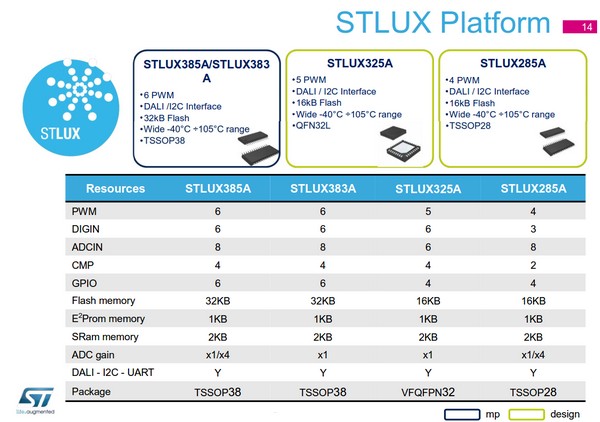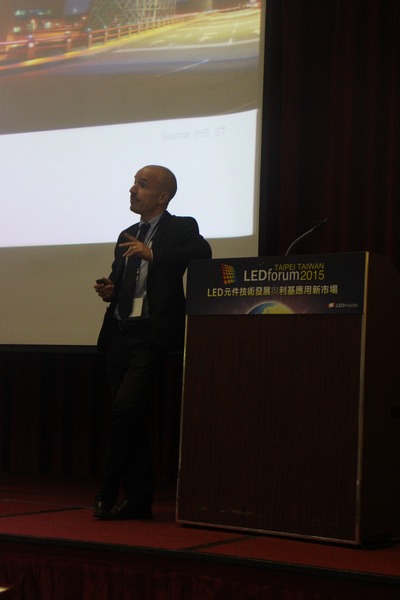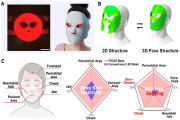Rapid developments in lighting technology are shifting driver demands, said David Lucchetti, Director of Marketing and Application Industrial, Power and Discrete Group Greater China and South Asia Region, STMicroelectronics at LEDforum 2015, which took place recently in Taipei, Taiwan.
Consumers’ transition from fluorescent lights to LEDs happened in a relatively short period from 2005-2010, shortly after smart lighting products emerged from 2010-2015, said Lucchetti.
 |
|
David Lucchetti, Director of Marketing and Application Industrial, Power and Discrete Group Greater China and South Asia Region, STMicroelectronics. (All photos courtesy of LEDinside) |
The emergence of smart lighting products and emphasis placed on human centric lighting has changed driver designs, making optimizing energy efficiency and reducing wasted power increasingly important in smart lighting drivers. “The key factor is having a very efficient device, the second is programmability,” added Lucchetti. The ultimate goal is to make a smart device that can be used in numerous applications.
The company’s first digital driver solution for LED is ST Lux, and has sold about 20 million units worldwide, Lucchetti presented in his Powerpoint at LEDforum 2015, which took place this year at Room 201, National Taiwan University Hospital International Convention Center. The flexible STLUX platform can be applied in smart lighting products including LED, HID, and fluorescent applications with dimming capacity and integration with sensors.
 |
|
Specs of STMicroelectronics STLUX Platform products. |
According to Lucchetti, the biggest challenge in the adoption of smart lighting products is not a technological issue, but more about educating consumers. “So imagine an engineer that has been working with analog drivers for 20 to 30 years, automatically there will be some resistance in change,” said Lucchetti.
“Consumers also need to be educated on the internal cost advantages,” he continued. “Many times the consumer is focused on the price of single IC LED driver cost.” As a result, they might be less aware of the systematic cost advantages accompanied with smart LED light upgrade. Another issue is the graphic unity (GU) layout in smart lighting products, which might not be intuitive or straightforward to operate.
 |
|
David Lucchetti, Director of Marketing and Application Industrial, Power and Discrete Group Greater China and South Asia Region, STMicroelectronics delivering his presentation at LEDforum 2015 that took place last Friday in Taipei, Taiwan. (All photos courtesy of LEDinside) |
STMicroelectronics’ LED drivers for lighting applications are nearly all silicon based devices. For other electronic driver applications the company might use other substrates, such as GaN-on-Si and others, he added. Smart light adoption and expansion will largely depend on developments in the Chinese market, which is the global manufacturing powerhouse for LED bulbs and other lighting products, said Lucchetti. The Asian country remains the biggest market for bulbs.
In wearable device market, STMicroelectronics is working with many different partners, but Lucchetti noted LEDs are accessories in smart bands and wearable devices. “Lead applications in wearables are sensors and connectivity, LED drivers are just accessories,” he said. For example certain smart bands such as Xiaomi or Jawbone do not even have a display, so LEDs might be added as accessory functions. Fitbit wearable devices on the other hand might come equipped with a display.
The company with 30 years of experience in developing electronics for automotive industry is very optimistic about LEDs market potential in the sector. Automotive grade LEDs can be difficult to develop and require a thermal resistance of at least 100 degrees Celsius. Lucchetti noted LEDs in automotive lighting applications have increased with increasing visibility in interior automotive lighting, head lights and dashboards. Varying automotive lighting regulations in different countries remains the biggest obstacle for manufacturers, though.
(Author: Judy Lin, Chief, Editor, LEDinside)





 CN
TW
EN
CN
TW
EN








